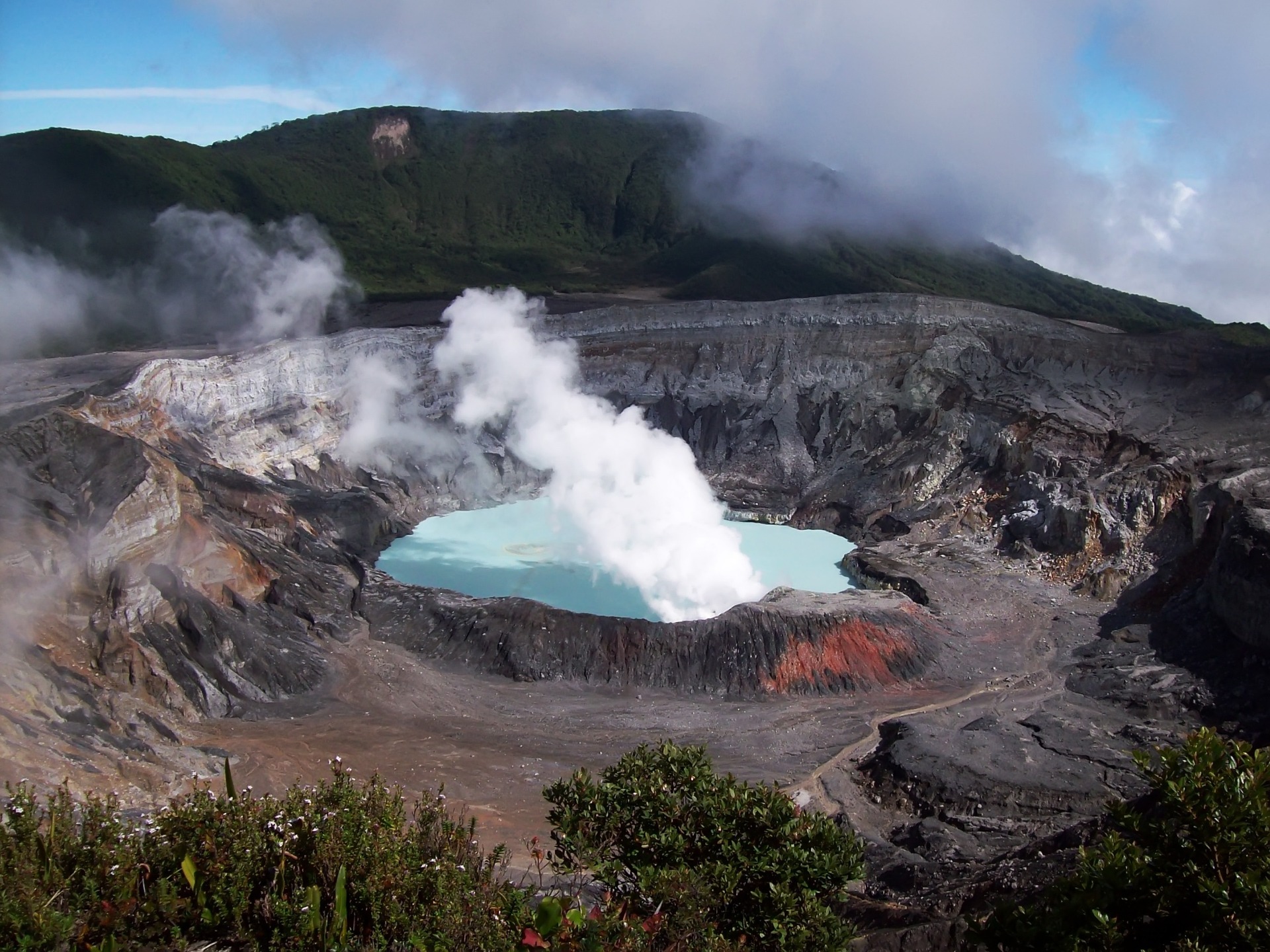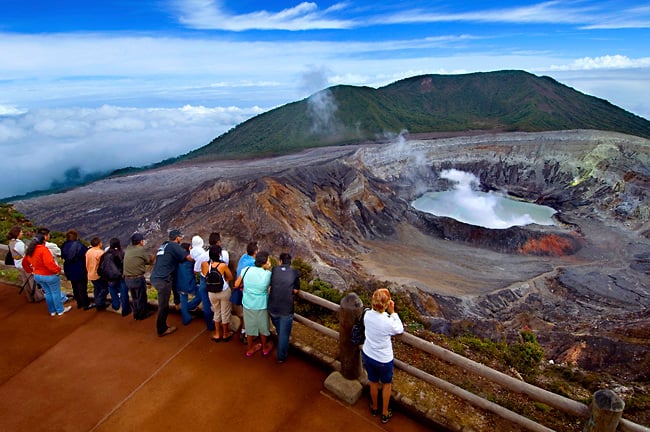Costa Rica Travel – Poás Volcano National Park is a popular San José, Costa Rica half-day trip. When the weather cooperates, visitors can witness one of the world’s largest active craters. Even though the last eruption period ended decades ago, the volcano continues to emit steam and smoke from its fumaroles and periodically shoots up geysers several hundred feet in the air. This scenario creates marvelous photo opportunities.
 A looped hiking trail starts at the modern visitor center and heads to two sizable calderas—the Mirador del Crater Principal and the Mirador Laguna Botos. Observation platforms provide ample space for picture taking.
A looped hiking trail starts at the modern visitor center and heads to two sizable calderas—the Mirador del Crater Principal and the Mirador Laguna Botos. Observation platforms provide ample space for picture taking.
These two summit craters are very different from one another. The Principal Crater Lake showcases periodic activity while the Botos Lake is clear and unassuming. The Principal Crater has a depth of 300 meters and a 1,320-meter diameter. The smaller Botos Lake is only 14 meters deep with a diameter of 400 meters.
Timing is important. Clouds tend to obstruct the view by mid-morning. Keep in mind that more people tend to come as the day progresses. The rainy season (May-November) will create a muddy and slippery trail.
The pathway goes through a cloud forest that is filled with lush vegetation and a small number of mammals. The dozens of varieties of flying species will delight birdwatchers. The trees oftentimes form archways over the trail. Informative signs provide some facts about the flora and fauna.
Even though the park is relatively small, 16,000 acres, the altitude (8900 feet above sea level) may affect some unconditioned or elderly hikers. Refreshments are available at the visitor center along with a small gift shop.
Before You Go
Consider wearing comfortable and sturdy shoes. The temperature will be cooler at altitude. A jacket or sweatshirt might be a necessity. During the rainy season, rain gear will be mandatory. Don’t forget bottle water and of course your camera.
By Sandy Bornstein
Arvada International Travel Examiner
From The Examiner

